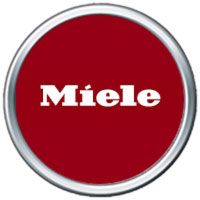
Car Park Canopies & Shelters Setup, How it is Done
Car park canopies and shelters are essential structures that provide protection for vehicles from harsh weather conditions, enhance user comfort, and add aesthetic value to parking areas. Whether for commercial complexes, residential estates, or public facilities, these structures are increasingly popular in urban settings. Setting up a car park canopy or shelter involves careful planning, precise engineering, and adherence to safety standards. This article outlines the step-by-step process of installing car park canopies and shelters, highlighting key considerations and best practices.
Understanding Car Park Canopies and Shelters
Car park canopies and shelters are typically made from durable materials like steel, aluminum, or polycarbonate, designed to withstand environmental elements such as rain, UV rays, and wind. They come in various designs, including cantilevered, wave, or modular structures, tailored to the site’s needs and aesthetic preferences. The setup process requires a combination of site assessment, structural engineering, and skilled labor to ensure a robust and visually appealing installation.
Step-by-Step Setup Process
1. Site Assessment and Planning
The first step in setting up a car park canopy is conducting a thorough site assessment. This involves evaluating the parking area’s size, layout, and ground conditions. Key considerations include:
- Space availability: Measuring the area to determine the number and size of canopies needed.
- Ground conditions: Assessing soil type and stability to ensure a solid foundation.
- Drainage: Ensuring proper water runoff to prevent pooling under the canopy.
- Local regulations: Checking zoning laws, building codes, and permit requirements.
A detailed plan is then drafted, including the canopy design, material specifications, and installation timeline. For larger projects, 3D modeling may be used to visualize the final structure.
2. Design and Material Selection
The design phase involves choosing a canopy style that complements the site’s architecture and meets functional needs. Common designs include single or double cantilever canopies, which provide ample coverage with minimal support columns, and modular shelters for flexibility in larger parking lots.
Materials are selected based on durability, cost, and maintenance requirements. Steel frames with powder-coated finishes are popular for their strength, while polycarbonate or fabric membranes offer lightweight, UV-resistant roofing. The design must account for wind loads, snow loads (in colder regions), and seismic activity to ensure structural integrity.
3. Foundation Preparation
A strong foundation is critical for the stability of car park canopies. The process begins with marking the locations for support columns, followed by excavation for footings. Depending on the soil conditions and canopy size, foundations may involve:
- Concrete footings: Poured into excavated holes to anchor steel columns.
- Pile foundations: Used in unstable soils to provide deeper support.
- Base plates: Bolted to pre-installed concrete slabs for smaller shelters.
The foundation must be level and allowed to cure fully before proceeding, typically taking 7–14 days for concrete to reach optimal strength.
4. Frame Assembly and Installation
Once the foundation is ready, the canopy’s frame is assembled. This involves erecting steel or aluminum columns and connecting them to the foundation using anchor bolts. The frame is then reinforced with cross-bracing or trusses to enhance stability. Precision is crucial during this stage to ensure the structure is plumb and aligned.
For larger canopies, cranes or hoists may be used to lift heavy beams into place. Skilled welders or technicians secure connections, ensuring compliance with engineering specifications.
5. Roofing and Finishing
The roofing material is installed once the frame is complete. Polycarbonate panels, fabric membranes, or metal sheets are cut to size and fastened to the frame using specialized fixings. Waterproof seals and flashing are added to prevent leaks. Additional features, such as gutters, downspouts, or solar panels, may be integrated to enhance functionality.
The structure is then inspected for structural integrity, and any necessary adjustments are made. A final coat of paint or protective sealant may be applied to the frame to improve durability and aesthetics.
6. Safety and Compliance Checks
Before the canopy is commissioned, a thorough inspection is conducted to ensure compliance with safety standards and local regulations. This includes verifying load-bearing capacity, wind resistance, and proper drainage. In some cases, a structural engineer or local authority may need to certify the installation.
7. Maintenance Planning
Post-installation, a maintenance plan is established to prolong the canopy’s lifespan. Regular inspections for rust, roof damage, or loose fixings are recommended, especially in areas with extreme weather. Cleaning the roofing material periodically prevents debris buildup and maintains clarity for translucent panels.
Key Considerations for Successful Installation
- Hiring professionals: Engage experienced contractors with a track record in canopy installations to ensure quality and safety.
- Weather conditions: Schedule installation during dry seasons to avoid delays and ensure proper foundation curing.
- Customization: Tailor the design to meet specific needs, such as integrating lighting or signage for commercial properties.
- Budgeting: Account for material costs, labor, permits, and potential site preparation expenses.
Setting up car park canopies and shelters is a meticulous process that blends engineering, design, and practicality. By following a structured approach—site assessment, design, foundation preparation, frame assembly, roofing, and compliance checks—installers can deliver durable and functional structures. These canopies not only protect vehicles but also enhance the value and usability of parking spaces. For businesses and property owners, investing in a well-installed car park canopy is a step toward improving customer experience and property resilience.




